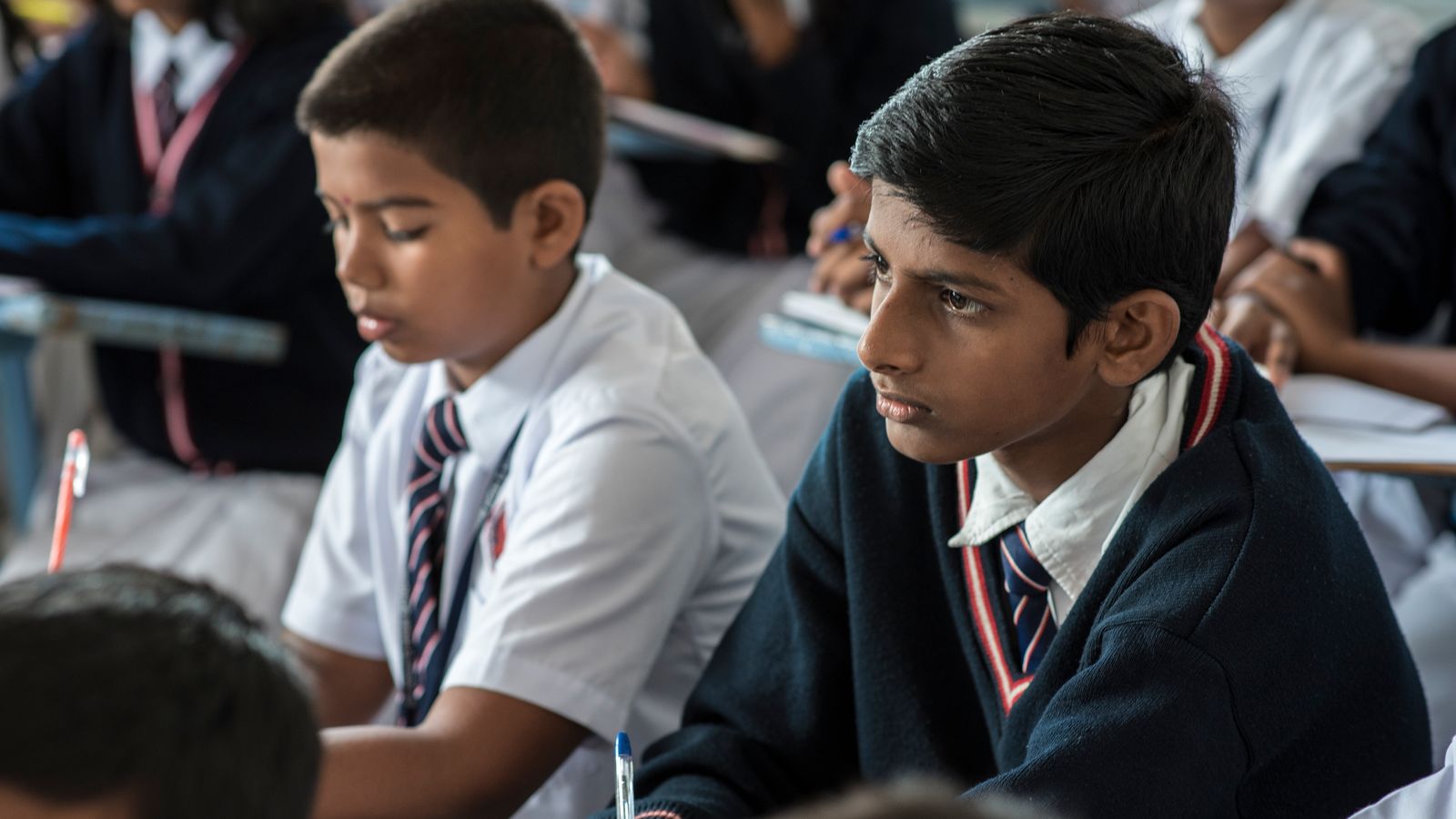St. Mary’s High School is in a dusty industrial suburb in Bangalore, in a neighborhood that is a gleaming contrast to the towering IT parks and upscale offices that dot this growing city. The school is a converted three-story building with cramped classrooms and narrow corridors. But when I walked into the fifth-grade classroom, I saw bright-eyed children from low-income homes, eager to understand the nuances of advanced fractions, and desperate for a fair chance to beat the odds stacked against them. Their parents – mostly blue-collar workers – chose this fee-paying private school with the hope that their children can succeed in the future.
There are approximately 200,000 low-fee, affordable private schools across India. The hopes and dreams of millions of low-income urban families are packed in the classrooms of these schools.
But the situation is bleak. A benchmarking study commissioned by the Michael & Susan Dell Foundation in 2015 showed that there are no discernable differences in learning outcomes between low-fee private schools and the government schools, both of which perform abysmally compared to high-fee private schools where most privileged Indian families send their children to study. Thus, improving the quality of learning in these affordable private schools is central to our mission – and has the potential to impact approximately 70 million children and their families. We realized that the solution hinges on a core value of our MISSION framework, measuring and rewarding Impact.
The affordable private schools in India represent a growing market. This market has attracted significant interest from a wide-range of entrepreneurs and impact investors. Yet, there is a need to make learning outcomes the common denominator for success and leverage this thriving market to direct funding and support to high-performing schools.
To meet this goal, we partnered with the Indian School Finance Company (ISFC) and Varthana, two of the leading school-finance companies that provide loans to affordable private schools like St. Mary’s. Together, we launched an innovative impact-linked funding instrument that rewards the schools as a part of their loans if they can demonstrate measurable improvement in learning outcomes. The improvement in learning outcomes are measured using global standards by an independent third-party agency.
Back in the fifth-grade classroom at St. Mary’s School, we are starting to see some improvements. In 2015, the school got a loan from ISFC and became eligible for the impact-linked reward program. The school leaders knew that they could receive a reward of up to 10 percent of their loan if the school was able to showcase improvements in student learning. The fifth-grade class participated in baseline assessments in the fall of 2015 and the assessment firm went back and did a follow-on assessment in the fall of 2017. And the school showed noticeable improvement in learning outcomes, making them eligible to receive part of their rewards.
True to the MISSION framework, we will continue to nurture a movement to measure outcomes and reward high-performing schools, so that low-income urban families in India can realize the dream of quality education for their kids.
In partnership with the Michael & Susan Dell Foundation, the Social Innovation & Investment Initiative at the New York University Wagner Graduate School of Public Service (NYU Wagner) analyzed more than 40 foundation-related investments, and together we developed a MISSION framework to document its impact investing strategy. The framework is comprised of the following elements: Market, Impact, Scale, Sustainability, Incrementality, Organization, and Next. This post, on the Impact aspect of the framework, is authored by Santhosh Ramdoss who is a Director at the Michael & Susan Dell Foundation’s India offices (and a proud NYU Wagner alumnus). This is the third post in a blog series that focuses on each of these elements. Read the full case study here.
